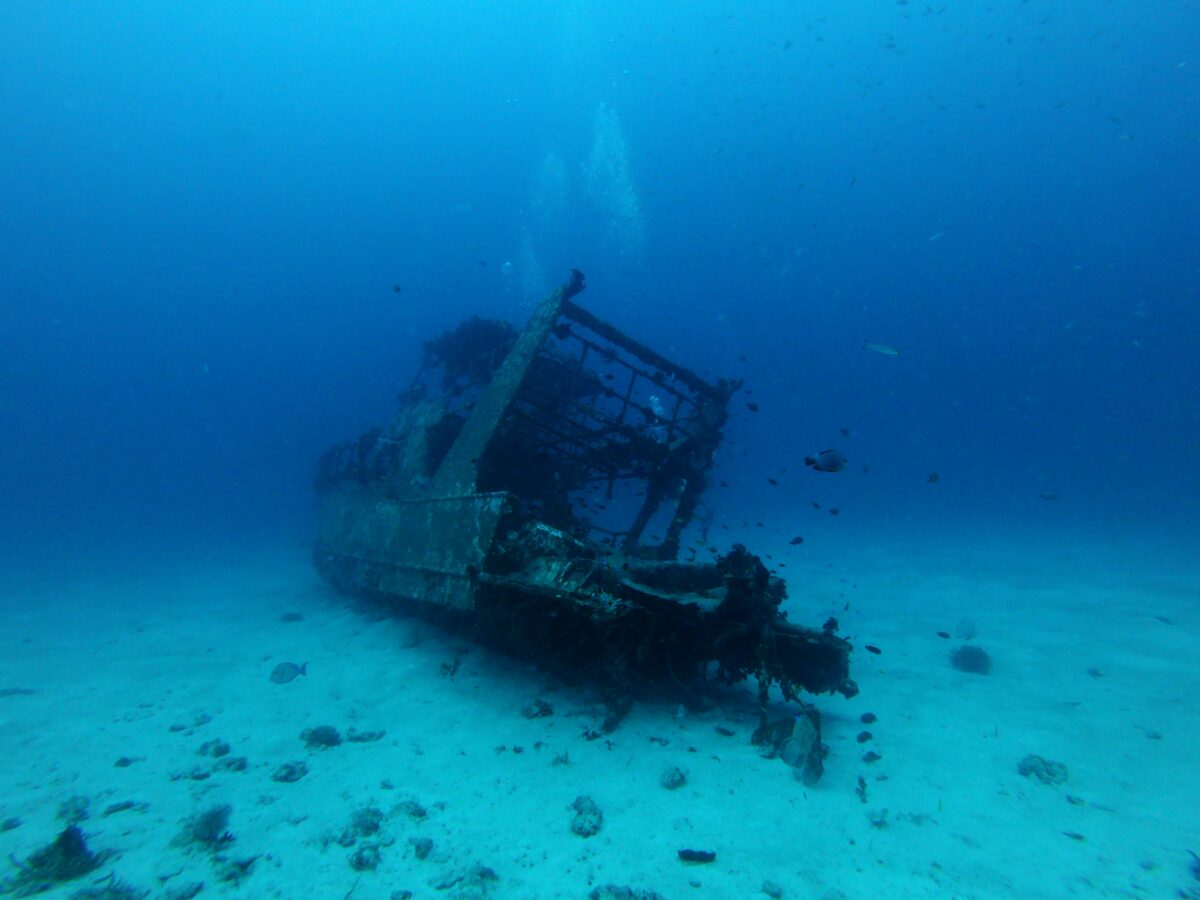Here Be Monsters: Historically, this phrase on maps indicated unknown or dangerous waters for sailors, symbolizing the risk of testing said waters. Many ships have been built, manned, and sunk throughout human history, especially during maritime warfare. These crashes swallowed up the lives of the crew; many of whom were lost to the ocean. But could these shipwrecks have monsters of their own? Could they even be monsters, damaging the natural world around them?
An investigation into the effect of shipwrecks on the natural world cannot be completely legitimized without considering its positive and negative effects. Ancient shipwrecks can become artificial reefs, serving as homes for many diverse ecosystems. A select few ships are even “legally protected for historical, artistic or archaeological importance,” further cementing the value of a “destroyed” ship. The advantages of creating these artificial reefs are so beneficial that people have purposely sunk retired ships to become new oceanic homes. The Maritime Archeology Trust gives the example of the ex-Royal Navy Frigate HMS Scylla, which was sunk on purpose in 2004, and after 5 years housed 263 different aquatic species, according to the Maritime Archeology Trust. Shipwrecks can become potential homes for marine life, so why are some dangerous to them?
While they might be providing homes for some species, shipwrecks and other debris at the bottom of the ocean can also be serious sources of aquatic pollution. Modern vessels’ dependence on oil and polluting chemicals was amplified during wartime in the twentieth century. Currently, there are about 3 million sunken vessels within the ocean, and 8,500 of them are classified as potentially polluting wrecks. The majority of these sunken vessels are products of WWI and WWII, containing harmful chemicals, munitions, and about 6 billion gallons of heavy fuel oil. Heavy oil leaking from shipwrecks “is 545 times more oil than the Exxon Valdez leak in 1989 and 30 times that of the Deepwater Horizon spill in 2010,” according to the International Union for Conservation of Nature. Heavy oil, released deep within the ocean is notoriously hard to clean up; even in comparison to typical ocean oil cleanups. The Exxon Valdez and Deepwater Horizon oil spills were infamous, sparking massive community efforts to clean up. The amount of oil lurking in shipwrecks, waiting for time to release it, will cause significantly less recognized worse effects.
In addition to oil spills, many shipwrecks from WWII have auxiliary damaging elements. After all, 75% of shipwrecks are linked to the Second World War, and their munitions include substances such as mercury and other toxic or carcinogenic chemicals, greatly affecting the marine life around them, as reported by the Parliamentary Assembly of the Council of Europe. Similar to plastic, the pollutants released from leaks and chemical breakdowns intensify as they move up the food chain, ultimately harming apex predators and potentially humans. These shipwrecks also affect organisms on the opposite end of the food chain: Iron from sunken ships can often be released in typically low iron environments in the ocean, leading to algae blooms, which deplete the oxygen in the water, suffocating corals and other animals (Ashworth, 2022). The negative impacts of shipwrecks are comparable to ticking time bombs: both pose increased danger and long-term consequences for the environment.
Dealing with shipwrecks can be challenging due to logistical issues and difficulties with identification. Furthermore, they can often cause conflicts between environmentalists and other groups, such as historians. One famous case is the USS Arizona, a ship that was sunk in the initial attack on Pearl Harbor, which led to the USA’s participation in World War II. Today, many tourists visit the wreckage to take pictures; regarding it as a historical site. However, at the site of this wreck, tourists can also see what is called “the black tears of the USS Arizona,” with an estimated half a gallon of oil a day that has leaked from the ship since 1941. “It’s believed between 14,000 and 64,000 gallons of oil have leaked from the USS Arizona since the attack, and the National Park Service estimates it could continue to leak for 500 years.” (Caulfield, 2020). The ship is an active military grave, with 1.7 million people visiting annually. Removal of the oil would affect historical artifacts, corpses, and urns at the site as well, the navy claims (Caulfield, 2020). This creates a complicated problem with the ship that others do not have. It is difficult to remove due to its historical significance, so other solutions must be sought. As the majority of all shipwrecks are the result of WWII, dealing with the environmental impacts becomes more complicated. Ships with historical importance sometimes ignite additional pushback against major changes to the sites, while having constant or potentially increasing negative environmental effects.
Shipwrecks are both beneficial and harmful to the world around them, becoming or destroying homes within the sea. Whether intentional or not, they impact the ocean around them and the life that lives there. The greatest negative impacts have been caused by the ships sunk in the World Wars, and could not have been prevented at the time. Many shipwrecks are not cleaned up and are now releasing oil and dispersing pollutants into the ocean around them. Shipwrecks also pose a unique challenge compared to other environmental concerns— historical value. Over time, as more of these wrecks are examined, repurposed, or indicated and treated for contamination, they become part of the ocean they disrupted. These shipwrecks remain in the water, deemed too expensive or dangerous to reclaim from the ocean. They could be seen as human-made monsters, creating new dangers similar to those of untested waters, or possibly something else on the map.
Sources:
Ashworth, J. (2022, October 18). World War shipwrecks are leaking pollutants into the world’s oceans. Natural History Museum. https://www.nhm.ac.uk/discover/news/2022/october/world-war-shipwrecks-leaking-pollutants-into-worlds-oceans.html
Caulfield, C. (2022, February 5). Oil constantly leaks from the USS Arizona. Is that an environmental problem?. Honolulu Civil Beat. https://www.civilbeat.org/2020/02/oil-constantly-leaks-from-the-uss-arizona-is-that-an-environmental-problem/
Helton, D. (2021, October 1). Preventing Marine Pollution Through a Historic Shipwreck Database. NOAA’s Office of Response & Restoration Blog. https://blog.response.restoration.noaa.gov/preventing-marine-pollution-through-historic-shipwreck-database
Marine Archeology Trust. (2023, August 10). Shipwrecks and the Marine Environment – Friends or foes? Maritime Archaeology Trust. https://maritimearchaeologytrust.org/4162-hljaov/
Marine pollution from sunken vessels. IUCN. (2023, April). https://iucn.org/resources/issues-brief/marine-pollution-sunken-vessels
Parliamentary Assembly. (2012). The environmental impact of sunken shipwrecks. Parliamentary Assembly of the Council of Europe. https://assembly.coe.int/nw/xml/XRef/Xref-XML2HTML-en.asp?fileid=18077&lang=en

